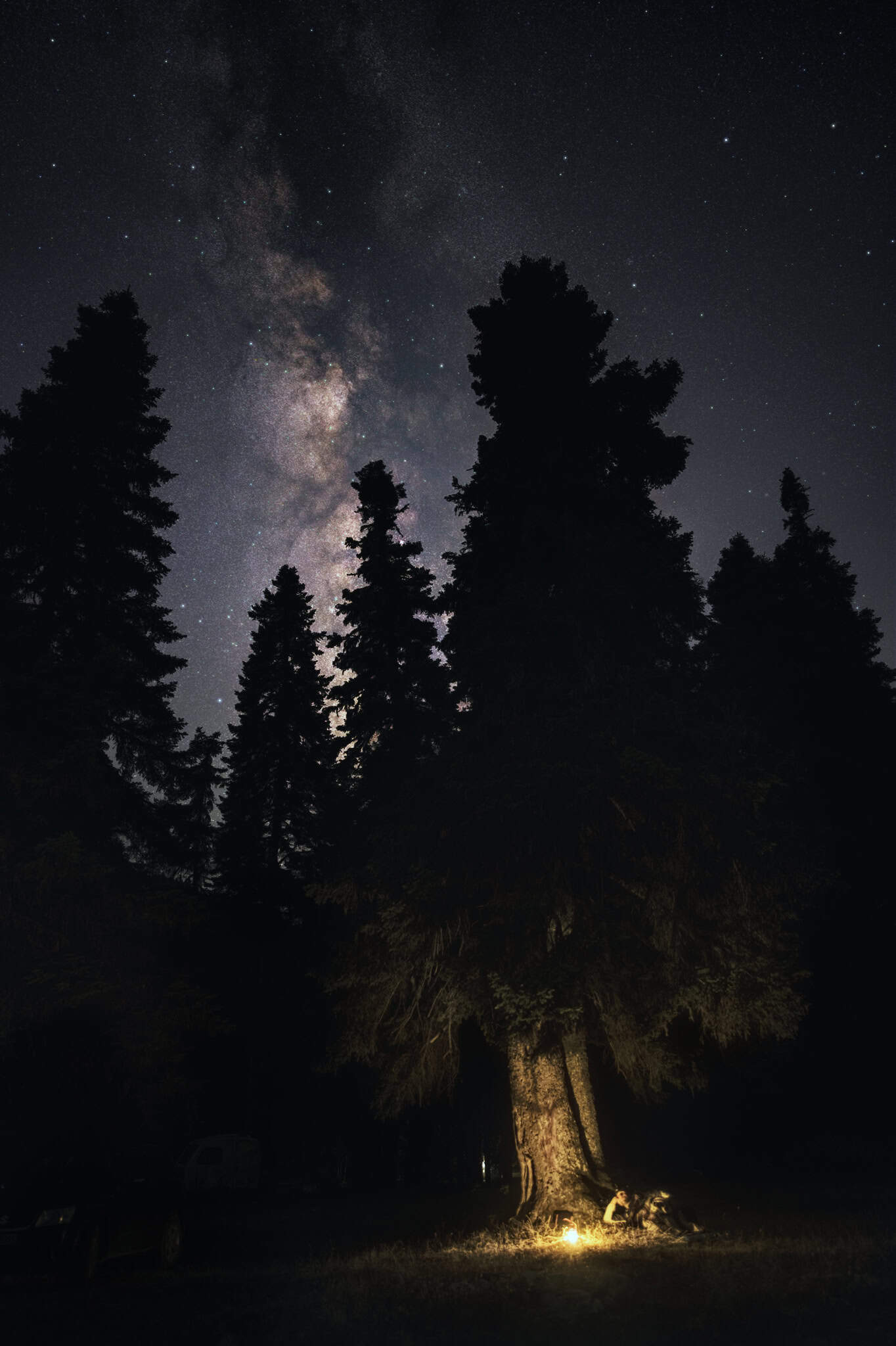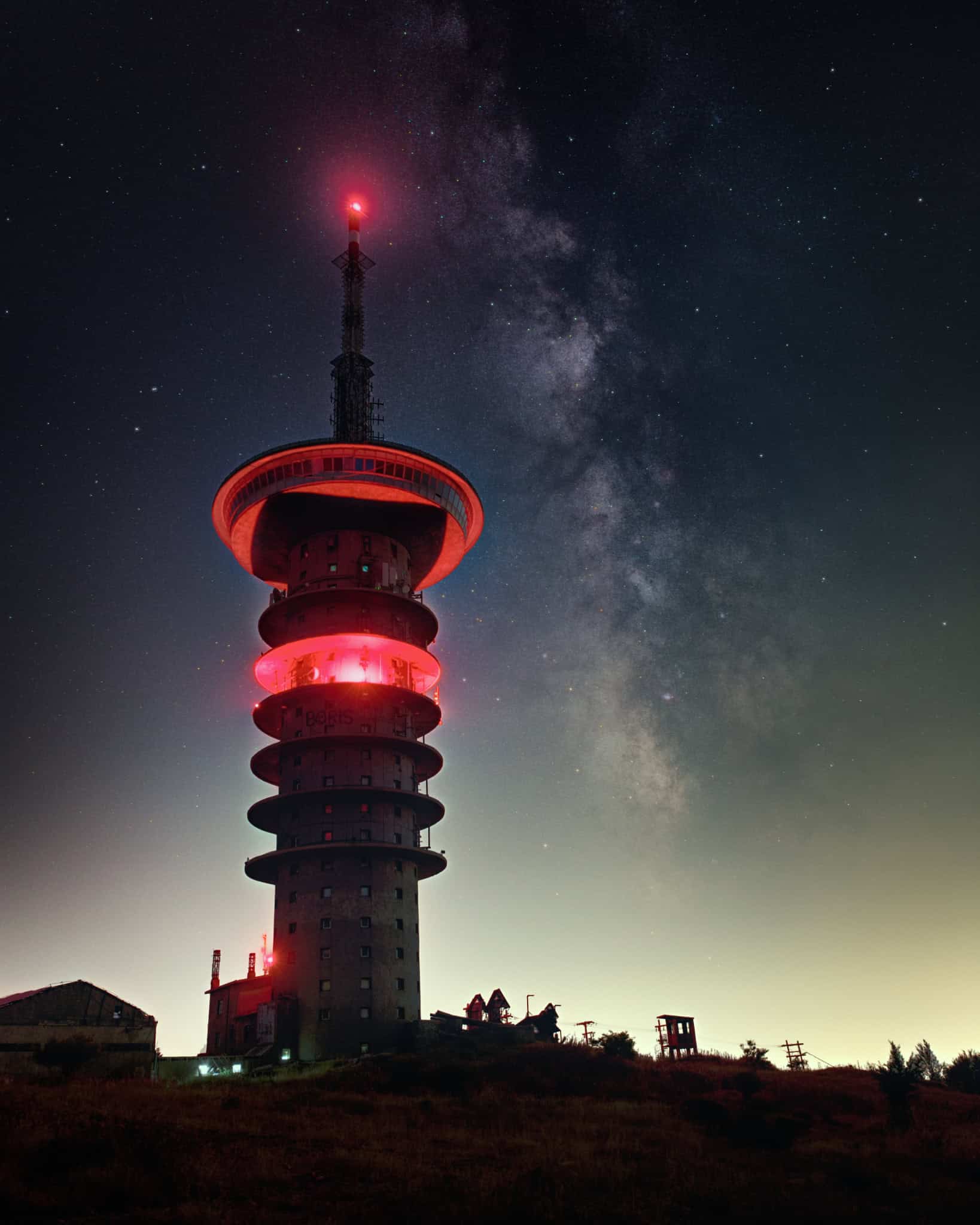1 ΠΡΟΣ 1 ΔΙΑΔΙΚΤΥΑΚΑ ΜΑΘΗΜΑΤΑ ΑΣΤΡΟΦΩΤΟΓΡΑΦΙΑΣ
Ξεπέρασε ό,τι σε εμποδίζει να αποτυπώσεις τη μαγεία του νυχτερινού ουρανού.
Επιλογή τοποθεσίας
Η σωστή τοποθεσία είναι κλειδί στην αστροφωτογραφία τοπίου.
Η φωτορύπανση μειώνει δραματικά την ικανότητά μας να αποτυπώσουμε αυτή τη μαγεία που καλπάζει πάνω από τα κεφάλια μας την νύχτα.
Επιλέγοντας μια τοποθεσία να φωτογραφίσεις μακριά από την πόλη αυξάνεις δραματικά την ευκρίνεια των ουράνιων σωμάτων στη φωτογραφία σου.
Επίσης, αποκτάς πρόσβαση σε μεγαλύτερη ποικιλία τοπίων που μας φέρνει στο επόμενο κεφάλαιο:
Σύνθεση
Αναμφίβολα ο γαλαξίας μας είναι ένα εντυπωσιακό θέμα, ο πρωταγωνιστής σε αυτό το είδος φωτογραφίας.
Μην ξεχνάς όμως πως τα ουράνια σώματα είναι ουσιαστικά τα ίδια εδώ και δισεκατομμύρια χρόνια. Επομένως πως μπορεί να ξεχωρίσει η σύνθεσή σου;
Είναι το τοπίο που θα βάλεις στο κάδρο σου που κάνει τη διαφορά.
Ακόμα κι αν πρόκειται για ένα χιλιοφωτογραφημένο τοπίο, πάντα έχεις την επιλογή να εισάγεις τη δική σου οπτική επιλέγοντας προσεκτικά το σημείο που θα σταθείς, την κατεύθυνση στην οποία κοιτάς και το εύρος της γωνίας θέασης.
Εξοπλισμός
Πέρα από το δημιουργικό κομμάτι υπάρχει και το τεχνικό. Σε άλλα είδη φωτογραφίας ίσως να μην είναι έτσι, όμως στην αστροφωτογραφία τοπίου ο φωτογραφικός εξοπλισμός είναι καθοριστικής σημασίας.
Κάμερα, φακός, τρίποδο, αστροστάτης, όλα παίζουν κρίσιμο ρόλο.
Ναι αν ξέρεις τι κάνεις μπορείς να έχεις καλό αποτέλεσμα με υποδεέστερο εξοπλισμό αλλά με τι τίμημα; Θα ξοδέψεις περισσότερο χρόνο κατά τη διάρκεια της λήψης και μετά για να υπερβείς τις αδυναμίες του εξοπλισμού σου.
Εδώ να πω ότι ικανός εξοπλισμός δε σημαίνει απαραίτητα και ακριβός. Ο γενικός κανόνας είναι πράγματι αυτός αλλά όπως σε κάθε κανόνα υπάρχουν και οι εξαιρέσεις.
Λήψη
Ίσως το πιο ευχάριστο κομμάτι για πολλούς φωτογράφους. Για μένα σίγουρα. Τόσο που έχω κάνει το λάθος να ξαμοληθώ στην τοποθεσία που επέλεξα και να φωτογραφίζω ό,τι βρίσκω μπροστά μου.
Ωραία συνταγή για να καταλήξεις με εικόνες στην κάρτα μνήμης σου που θα κοιτάς μετά στον υπολογιστή και θα αναρωτιέσαι τι στο καλό είχες στο κεφάλι σου.
Όσο ωραία κι αν νιώθεις όταν λειτουργείς αυθόρμητα και αναμφίβολα κάποιες φορές αυτό μας κάνει πιο δημιουργικούς, έχει μεγάλη σημασία να έχεις από πριν ένα πλάνο με τις πιθανές συνθέσεις στην τοποθεσία που επέλεξες και ποιες τεχνικές πρέπει να χρησιμοποιήσεις για να πετύχεις το αποτέλεσμα που θέλεις.
Έχε κατά νου ότι η αστροφωτογραφία είναι ένα άλλο μέτωπο της αρχέγονης μάχης του φωτός με το σκοτάδι: είσαι μέσα στο σκοτάδι και παλεύεις να συλλέξεις το λιγοστό φως από τα ουράνια σώματα.
Τεχνικές όπως η μακρά έκθεση, το stacking, το πανόραμα και το tracking με χρήση αστροστάτη είναι πολύτιμες για να αποτυπώσεις καθαρά αυτό που επέλεξες να έχεις στη σύνθεσή σου.
Επεξεργασία
Ωραία. Πήρες τις λήψεις που ήθελες, γύρισες στο ζεστό και άνετο σπίτι σου και ελπίζοντας ότι όλα έχουν πάει ρολόι μέχρι τώρα, έχεις στον υπολογιστή σου καθαρά raw αρχεία γεμάτα με τις ομορφιές που συνάντησες εκεί έξω.
Εδώ ξεκινάει ο μακρύς δρόμος της επεξεργασίας αυτών των αρχείων. Επεξεργασίας που είναι απαραίτητη για να εμφανιστούν οι υφές, τα χρώματα και οι λεπτομέρειες των ουράνιων σωμάτων.
Στατιστικά η επεξεργασία είναι πιο χρονοβόρα από τη διαδικασία της ίδιας της λήψης και απαιτεί να γνωρίζεις καλά τα προγράμματα της επιλογής σου. Φυσικά όσο περισσότερο εξασκείσαι τόσο πιο γρήγορα θα μπορείς να φτάνεις στο τελικό αποτέλεσμα, έτοιμο για παρουσίαση και εκτύπωση.
Πως σε βοηθάω με όλα αυτά;
Η συντριπτική πλειονότητα των ανθρώπων στο άκουσμα και μόνο της διαδικασίας που έχει η αστροφωτογραφία τοπίου νιώθουν ένα περίεργο συνδυασμό δέους και αποστροφής.
Αν με διαβάζεις ακόμα ίσως να μην ανήκεις σε αυτή την κατηγορία ανθρώπων.
Ίσως να νιώθεις να σε μαγνητίζει κι εσένα αυτή η απόκοσμη μαγεία που βρίσκεται εκεί έξω όσο οι άνθρωποι συνεχίζουν τις δουλειές τους αδιάφορα.
Ίσως να θες να βγεις εκεί έξω να συναντηθείς μαζί της. Να τη βιώσεις με όλο σου το είναι.
Αλλά δεν το έκανες ακόμα γιατί υπάρχουν ένα σωρό τεχνικά εμπόδια που σου φαίνονται βουνό.
Έχω περάσει ατελείωτες νύχτες εκεί έξω παλεύοντας με το λιγοστό φως, τα στοιχεία της φύσης, τις αδυναμίες του εξοπλισμού μου και τις δικές μου αδυναμίες.
Κάποιες φορές με παρέα, άλλες ολομόναχος χωρίς κανένα περισπασμό.
Ό,τι έμαθα το έμαθα μόνος μου, πειραματιζόμενος και μελετώντας προσεκτικά τις δουλειές άλλων αστροφωτογράφων.
Δεν χρειάζεται να μάθεις κι εσύ τα πάντα μόνος σου. Θα ήταν χαρά μου να σε βοηθήσω με ό,τι σε εμποδίζει από το να αποτυπώσεις την μαγεία του νυχτερινού ουρανού.
Στείλε μου μήνυμα και πες μου ποιο είναι το νο1 εμπόδιο στην αστροφωτογραφία σου.
